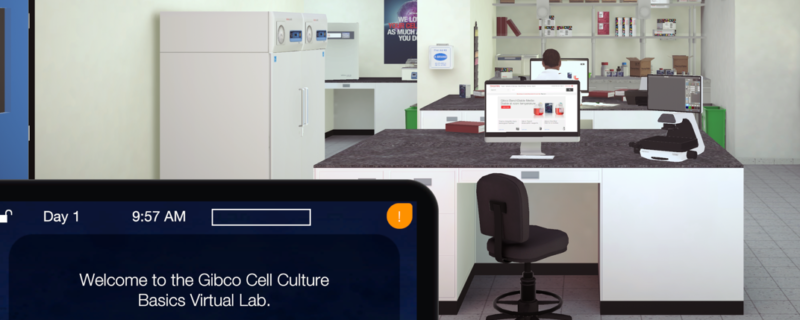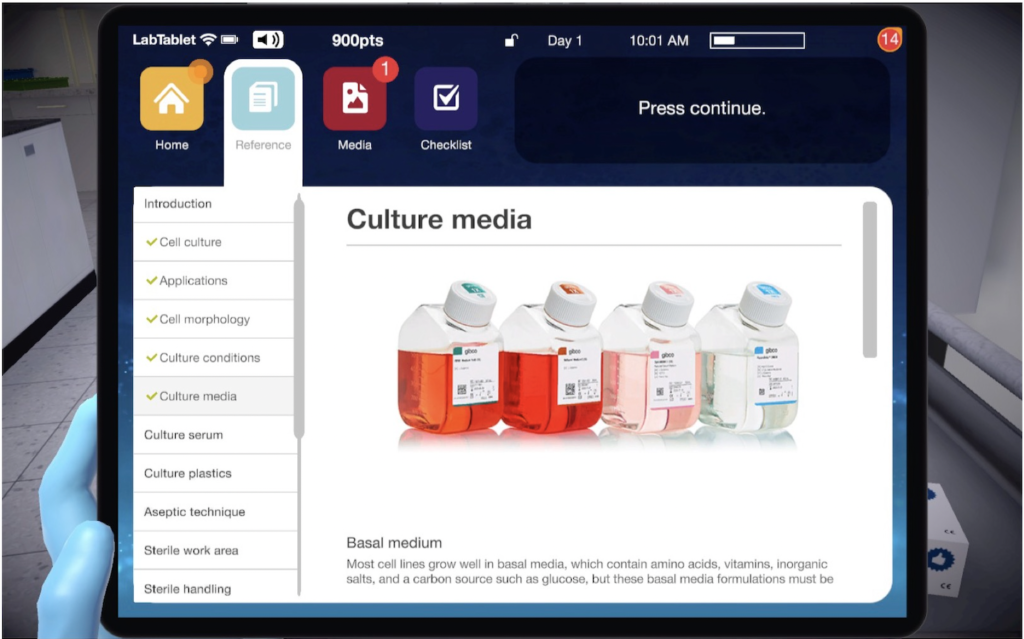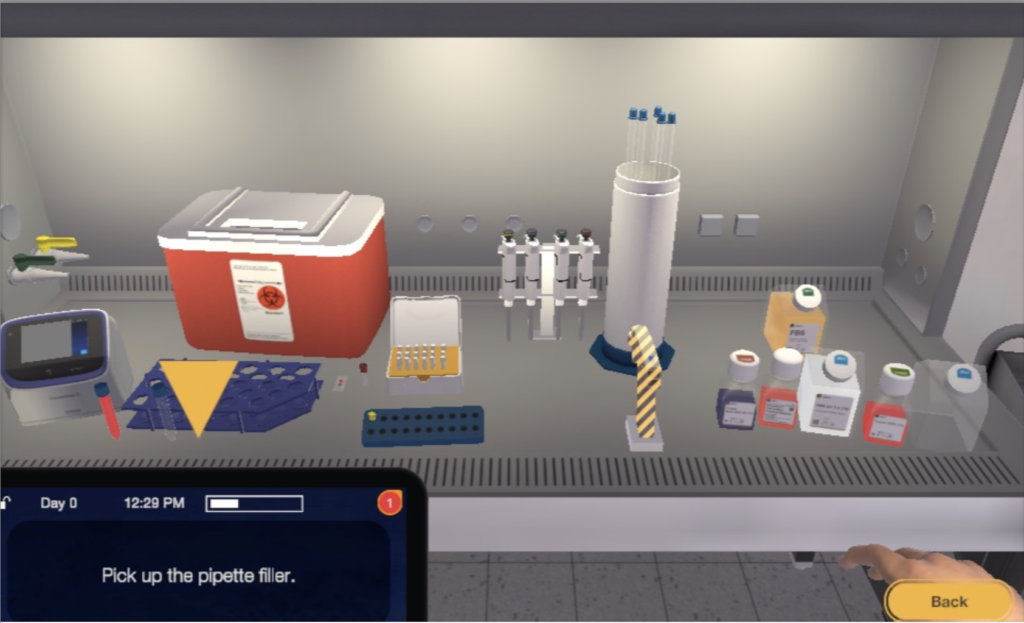
Gibco Cell Culture Basics Virtual Lab – A Great Example of the Benefits of Digital Training
Digital training tools are being popularized in the life sciences because of their accessibility, flexibility, and ability to foster learning across different competency levels and potentially in different geographical locations. The Gibco Cell Culture Basics Virtual Lab is a great example of this. Over the years, it has been a valuable resource for those new to cell culture or those seeking to improve their baseline skills. Due to popular demand, Gibco has recently re-launched the virtual lab with improvements and new features. The “renovated” lab builds on the original framework, offering scientists information on a wide range of cell culture topics and interactive activities within a virtual lab.
Once immersed in the virtual environment, the Lab Tablet prompts you to move between the various workstations in the cell culture lab to execute different tasks as part of a standard cell culture workflow (pictured below).

I took the opportunity to walk through the guided step-by-step exercise to initiate a fibroblast culture and passage/cryopreserve the cells. The Lab Tablet walked me through activities including:
- Introduction to cell culture
- Preparing the cell culture reagents
- Preparing the cell culture
- Passaging the cells
- Preparing the cells for freezing
The training took around 45 minutes and through each step, the program provides a brief background and highlights best practices for different cell culture operations including aseptic technique, cell culture reagent prep and more. It was great to see the reasoning behind the way things are done in the lab, like why certain components are included in cell culture media (i.e., sodium bicarbonate is added to counteract the pH changes associated with CO2 in the incubator). The quiz questions keep you engaged throughout the simulation and ensures that you have a good understanding of the material. The Reference app in the program also provides access to additional information on all the topics covered as well. The Lab Tablet does an excellent job of prompting a user through the explanations behind each step as well as navigating through the virtual lab itself to execute each step in the protocol.

As someone who has worked in a lab before, it was a fun exercise to walk through a process I have done many times over, even in a virtual space. I found it to be valuable that the program moves through each step in the workflow sequentially because the order of operation is important to successfully aseptic handling and good cell culture technique.

I’m happy to report I passed the training with flying colors and even earned a badge. Upon completion, I was provided with additional resources that could be accessed for more information, including cell culture basics videos and more.
Cell culture is a critical operation in research labs around the world and having access to virtual tools can be a great asset to establish or expand the knowledge base of new students, seasoned scientists, and serves as a good reminder of best practices for cell culture in general. Expanding the educational toolbox to incorporate digital tools like the Cell Culture Basics Virtual Lab can provide a standardized foundation that can supplement hands-on training to increase training efficiency and decrease the time to on-board personnel.
To get more information and to try the tool out for yourself, please visit: www.thermofisher.com/cellculturebasics